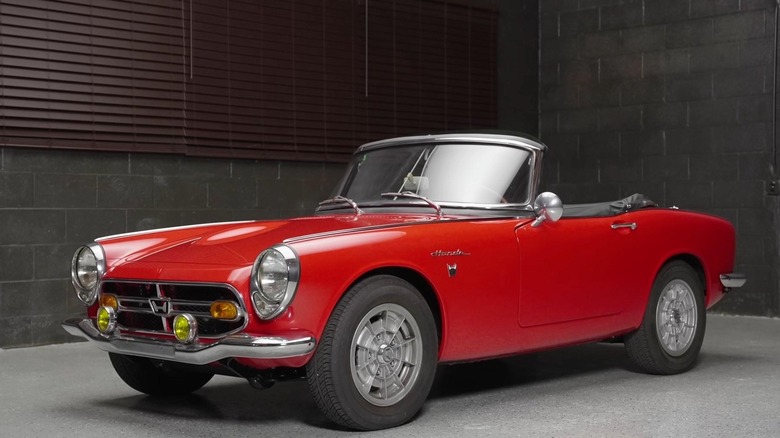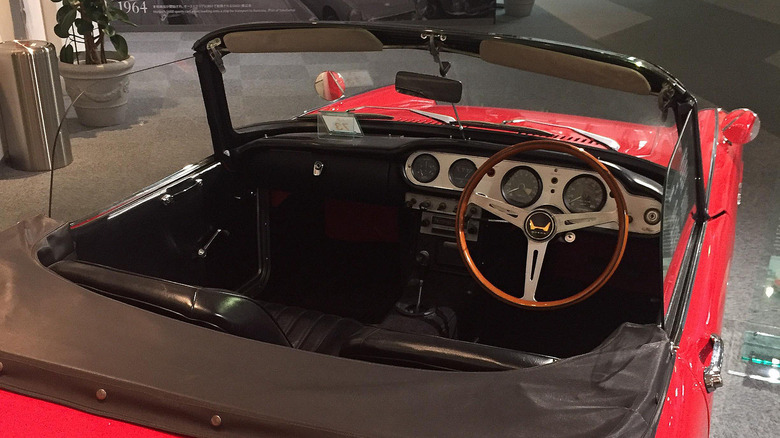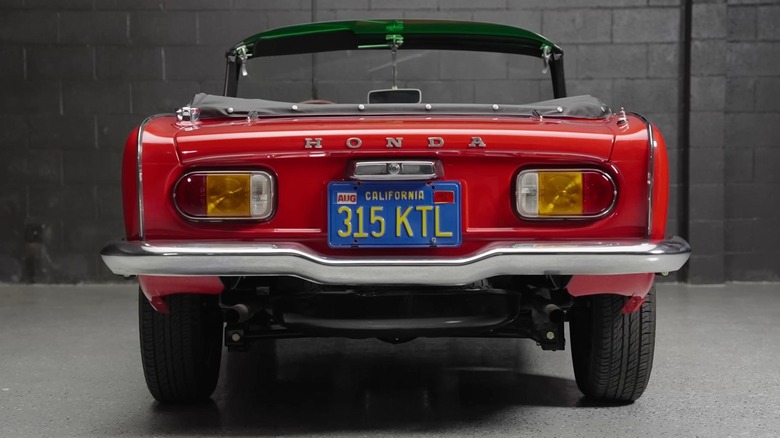Here's What Made Honda's First Passenger Car So Unique
Honda is one of the biggest automotive manufacturers on the planet now, but that wasn't always the case. In fact, at one point, Honda didn't produce cars at all. The company started solely as a motorcycle manufacturer, as some might know. Soichiro Honda, the company's founder, admitted he was hesitant to even enter the world of automobile production in 1959, as he wanted to be sure the performance of cars and the production facilities lived up to his standards.
Fast forward to just three years later, though, and Honda had its prototype for an incoming sports car on display at the 1962 Tokyo Auto Show. Over one million people in total attended, and post-war Japan was ready for an affordable sports car, so Honda had to act quickly. In June 1963, Honda launched an impactful ad campaign offering prizes to those who correctly guessed the price of the Honda Sports 500. Then, just four months later, the 1963 S500 — Honda's first passenger car — hit the market.
Motorcycle-inspired design and engineering
One of the most unique and outstanding features of the S500 was its use of a chain-driven powertrain. The transmission sent power to the rear wheels via a chain drive that was integrated into the car's suspension system, and, yes, it's as confusing to look at as it sounds.
The most outstanding feature of the Honda S500, though, is the engine under the hood: a dual-overhead-camshaft high-revving four-cylinder. The engine was not pulled from a motorcycle, as some folks assume. Instead, Honda developed this engine specifically for the car. It did, however, have some hefty motorcycle influence. It's small, lightweight, and revs to the moon, producing a peak of 45 horsepower at 8,000 RPM. It would continue to rev out to 9,500 RPM, which is the highest-revving engine ever put in a production passenger car, even to this day.
The interior of the S500 was kept extremely simple, with just two large dials in front of the driver and a few switches on the left. Honda's intent was to keep the interior reliable instead of focusing on making it look elegant and having a handful of small switches and components that could break.
[Featured image by Hideya via Wikimedia Commons | Cropped and scaled | CC BY-SA 4.0]
Affordability and fun set the tone for Honda's longevity
The Honda S500 cost 459,000 yen when it first came out in 1963, which worked out to around $1,300 at the exchange rate of the time. That translates to about $13,000 in today's money. In short, the car was cheap.
The combination of fun-to-drive performance cars with a reasonable price tag is still a staple principle of Honda's production to this very day. Without the introduction of the S500, we may never have seen things like the Integra Type R or Civic Type R.
The S500 was succeeded by the S600, and then the S800, which were all the same chassis with bigger engines. By the end, the chain-driven transmission/suspension setup was replaced with a standard solid axle affair. Throughout its entire production run, though, the spirited handling remained unaffected. It truly was a breakout moment for Japan in that it saw the development of a purpose-built sports car rather than a vehicle that was largely developed for utilitarian A-to-B purposes. To this day, the S500 remains one of the most unique and important Hondas ever created.


